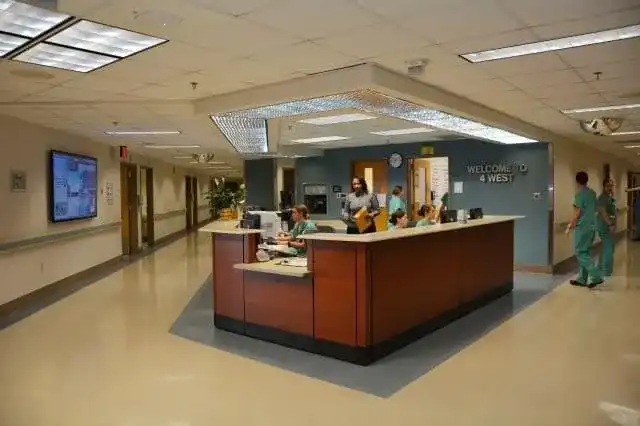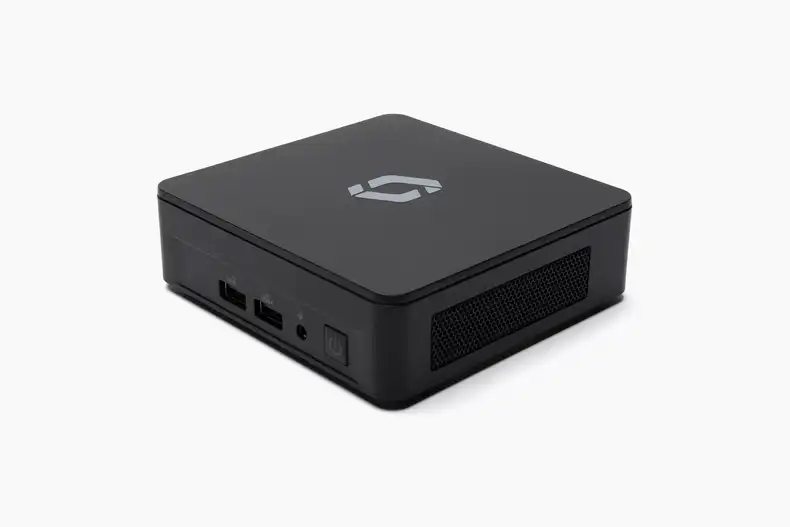Digital signs are an excellent tool for hospitals to communicate with medical professionals, patients, and visitors. A hospital can have thousands of people pass through its halls each day, and hospital digital signage can keep these people informed and up-to-date. In this post, we’ll discuss how a hospital IT staff can launch a hospital’s first digital sign.
Selecting hospital digital signage software
Digital signage software is important, as it allows hospital staff to schedule and manage content efficiently. In the past, hospital employees would have to physically visit each of the hospital’s digital signs and upload new content with a USB drive. Hospital digital signage software allows IT staff to manage a screen’s content in just a few clicks from anywhere via a central web interface.
When selecting hospital digital signage software, you should make sure it has a few key features before purchasing. First, make sure that the software allows you to schedule content in advance. With these features, hospital IT staff can dedicate a set amount of time each week to digital signage content. For the remainder of the week, the IT staff can then focus on other projects without distractions from content management duties.
Secondly, make sure that hospital digital signage software allows users to manage multiple screens as a single group. Hospital campuses often have floors or even entire buildings dedicated to a particular purpose or medical specialty. Accordingly, these locations will have unique digital signage content. With screen grouping functionality, hospital IT staff can edit the content for all screens in a particular group together. This method saves a ton of time when compared with editing the content of each screen one screen at a time.
Selecting hospital digital signage hardware
Hospital signage systems also require several hardware components, such as a digital signage player and, of course, a digital display screen. For a digital signage player, it is essential that hospital staff select a player that is not more powerful than they need it to be.
Often, teams select a digital signage player that has more processing power than is required for the job. This choice ends up costing the hospital more money than it needs to pay for upfront hardware fees and ongoing digital signage electricity costs. To display image, video, and even live web page content in 1080p Full HD, a Raspberry Pi digital signage player will do just fine. A Raspberry Pi digital signage player, such as the Screenly Player, only 3 watts of electricity.
For a digital display screen, a hospital can use any TV screen that accepts HDMI input and displays in at least 1080p Full HD resolution. Today, almost every TV sold meets those requirements. Hospitals also have the option of purchasing commercial-grade digital signage displays, which will have a longer lifespan than a typical mass-market TV screen. One great option for commercial-grade displays is an NEC display with a built-in Raspberry Pi digital signage player. You can purchase digital signage NEC displays here.
Healthcare digital signage and security concerns
Healthcare IT professionals must be sure that hospital digital signage software does not present additional security vulnerabilities for hospital IT systems. Most digital signage hacks result in hackers displaying inappropriate content on digital signs. However, some digital signage hacks result in hackers gaining access to hospital backend systems and databases. These hacks can put sensitive patient health information and other personally identifiable information (PII) at risk.
When selecting a healthcare digital signage solution, it is important for IT teams to ensure that the hospital digital signage system has a variety of security features. Security features can include using a secure operating system such as Linux-based Ubuntu Core and having no open network ports. Another useful security for medical digital signage is to encrypt all communication between servers and digital signage hardware. Additionally, software updates should occur automatically with each digital signage player to ensure that teams protect each device against patched vulnerabilities. Check out our article on digital signage security to learn more.
Content ideas for hospital display boards
Once a hospital display board is up and running, the next step is to populate the screen with useful and engaging content. Fortunately, there are a ton of great content opportunities for digital signage in the healthcare industry.
One popular use case for hospital digital signage is reducing perceived waiting times in visitor waiting rooms. In waiting rooms, digital signs can display content on the hospital’s history, hospital cafeteria specials, and interesting healthcare facts. This waiting room digital signage can help make the visitor experience more enjoyable.
Another use case for hospital digital signage is to display content in patient rooms. This content can include upcoming hospital events, doctor and staff biographies, as well as recent patient success stories. This content can keep patients entertained and help in reducing stress for patients.
For more about content ideas and use cases for hospital digital signage, check out or hospital digital signage case study that features an actual Screenly-powered hospital.
Using digital signs for healthcare digital advertising
One use case for digital signs is healthcare digital advertising. With healthcare digital advertising, businesses can buy screen time on hospital digital signs. Advertisers can then use this screen time to display image and video ads to hospital visitors. These advertisements can feature promotions from local businesses or even healthcare advertising content from private clinics and other healthcare marketers.
Hospital waiting rooms are an excellent location for healthcare digital advertising, as visitors often have hours of idle time without anywhere to direct their attention. Check out our article on setting up a digital signage advertising network to learn more.
Where to get your hospital digital signage software and hardware
To get started with hospital digital signage software, sign up for Screenly’s online digital signage software. Screenly digital signage software includes content scheduling, screen grouping, and digital signage API features that are important for a successful hospital digital signage deployment.
To purchase a digital signage player, visit our digital signage players page to find an option that works for you. Many hospital IT teams are interested in our Raspberry Pi self-build option. This option is attractive to hospital IT teams, as it allows them to build a large number of digital signage players in a cost-efficient manner.
If you have any questions regarding a hospital digital signage deployment, feel free to reach out to Screenly Support. We’re always happy to talk with customers regarding upcoming hospital digital signage deployments - there is never a project that is too big or too small!





